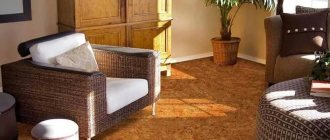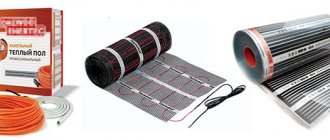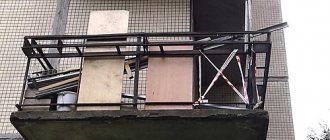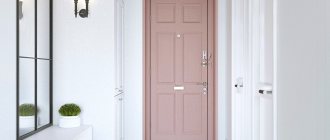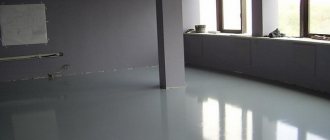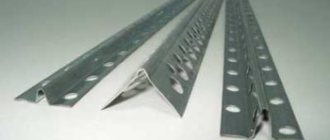What are vinyl tiles and PVC floor tiles?
Vinyl tiles appeared on the market relatively recently, but have already become popular among interior finishing specialists. It can be compared to linoleum cut into squares or rectangles. But the manufacturing technology of such flooring differs from linoleum.
It's all one. Vinyl tile is a PVC floor covering that is a multi-layer material that is flexible and dense at the same time. The base layers include vinyl and resins in combination with stabilizers, plasticizers and fillers.
The mass is pressed into molds, then a film with a pattern is applied, a transparent PVC film creates a protective layer, and a layer of polyurethane is added on top, making the product wear-resistant.
There are two types of PVC tiles:
- vinyl;
- quartz-vinyl - has particular wear resistance, but its cost is much higher than vinyl.
Vinyl floor tiles have another advantage: they are cut into squares or rectangles that are easy to install and match. The cost of the material is quite high, but by calculating the required number of tiles, you can minimize the remaining scraps.
Some LVT vinyl manufacturers
Aquafloor
✔ Go to Aquafloor review.
All adhesive collections are produced in the PVC structure, including the chic herringbone parquet Aquafloor Parquet Glue, as well as the unique collection of interlocking vinyl flooring Nano 43 wear resistance class with a thickness of only 3.2 mm. Note that Aquafloor offers all types of vinyl floors except quartz vinyl tiles: SPC vinyl Art, Quartz and Stone, as well as WPC and Rigid Vinyl.
Fine Flex
✔ Go to Fine Flex review.
Economy collection of Russian-made adhesive LVT tiles from the supplier Fine Floor Rus. Fiberglass is integrated into the structure for stability, and the decors are named after stunning natural places in Russia.
Tarkett
Another Russian manufacturer with a very wide range of various adhesive-type vinyl floor coverings, including collections with a 0.7 mm protective layer. The Art Vinyl line also has 4 collections of SPC laminate: Deep House, Jazz Click, Progressive House, Dream House.
Vertigo
Chinese manufacturer of commercial LVT tiles (wear-resistant layer 0.7 mm) with a wide variety of designs: wood, stone, canvas, herringbone parquet, porcelain stoneware. Floor coverings are available in all installation methods: adhesive, Uniclic joints, free-standing tiles. Vertigo specializes exclusively in LVT coatings.
Vinilam
✔ Go to Vinilam review.
In 2022, the Vinilam brand updated its main range of elastic vinyl - two collections, 23 duplicated in adhesive and locking decor with imitation of valuable wood species. In addition, Vinilam Ceramo Glue XXL and Stone (decors from the SPC collections of the same name) are produced on an LVT basis. In addition to PVC tiles, Vinilam’s assortment includes SPC laminate Ceramo, Rigid Vinyl and WPC tiles.
Kinds
PVC floor tiles differ in the installation method:
- with a self-adhesive base or without an adhesive layer, for installation of which you additionally need to purchase special glue. For such tiles, it is necessary to prepare a flat surface and lay them strictly in the joint. The result is a coating that is firmly attached to the floor;
- with a lock fastening to each other. Locks can be mechanical or adhesive, with the help of which each tile is fastened to each other and does not require gluing to the base.
Grout options
There is a special mixture for decorating seams, which can be applied in several ways:
- choose a color to match the coating to completely hide the seams;
- emphasize the geometric pattern using contrast (black tiles - white stripes);
- use a clear mixture. Suitable for surfaces with an ornamental pattern, a special play of colors, or a variegated pattern.
If there is high humidity in a house or apartment, it is recommended to use epoxy grout. It prevents the appearance of black mold and mildew and is impervious to moisture. This option is more expensive, but will eliminate problems with dampness.
How to choose PVC tiles
When choosing tiles, several factors should be taken into account, for example, environmental friendliness if we are talking about decorating a children's room, wear resistance for places where furniture on wheels will be used, etc. In the case of wear resistance, pay attention to the class, information about which the manufacturer indicates on the packaging.
There are several classifications of vinyl tiles:
- class 21-32 is considered the most inexpensive and less durable; the protective coating is thin and its use is limited to minimal mechanical stress (suitable for bedrooms and living rooms);
- class 33-42, such tiles are quite thick and reliably protected by a durable layer, allowing the use of furniture on wheels (optimal for the kitchen, bathroom and corridor);
- For industrial facilities with intense impact, class 43 is suitable; for a home there is no point in taking it, primarily because of the high price.
To avoid different shades of PVC tiles, it is recommended to buy the same series.
Dimensions
Tiles vary in thickness, width and length. When selecting, special attention must be paid to the thickness of the material: single-layer models are usually in the range of 1.5-2.5 mm. They are less durable due to the lack of a backing and a thick protective layer.
Higher quality models in terms of durability reach thicknesses of up to 5 mm. Moreover, the material on a foamed PVC backing behaves well in wet rooms, while the material on a warm backing is suitable for dry rooms.
The dimensions of square tiles can be (cm):
- 30x30,
- 50x50,
- 65x65.
Therefore, it is quite easy to choose one for your room, knowing the area of the surface to be covered.
Collection characteristics
| Brand | Collection (links - descriptions) | Class; protective layer, mm | Plank or tile, mm | Thickness, mm | Packaging, m2 (pcs.) | Laying | Decors | Chamfer |
| Aquafloor | Classic Glue | 43; 0,5 | 177.8x1219.2 | 2 | 3,252 (15) | Adhesive for PVC coatings | Tree | No |
| Real Wood Glue | 177.8x1219.2 | 2 | 4,335 (20) | Wood, synchronous embossing | No | |||
| Parquet Glue | 122x610 | 2,5 | 3,72 (50) | Herringbone parquet, synchronous embossing | Yes | |||
| Nano Click | 180x1221 | 3,2 | 3,52 (16) | EasyLock | Wood, synchronous embossing | No | ||
| Fine Flex | Wood | 42; 0,5 | 140x940 | 2,2 | 3,03 (23) | Adhesive for PVC coatings | Tree | No |
| Tarkett Art Vinyl | Blues | 43; 0,7 | 152x914 | 3 | 2,09 (15) | Tree | Yes | |
| 457x457 | 2,09 (10) | Stone | Yes | |||||
| Cosmic | 152x914 | 3 | 2,09 (15) | Tree | Yes | |||
| Epic | 42; 0,55 | 152x914 | 2,7 | 2,09 (15) | Tree | Yes | ||
| Jazz | 41; 0,4 | 152x914 | 2,1 | 2,5 (18) | Tree | Yes | ||
| New Age | 152x914 | 2,1 | 2,5 (18) | Tree | No | |||
| 457x457 | 2,5 (12) | Stone | ||||||
| Lounge | 43; 0,7 | 152x914 | 3 | 2,09 (15) | Tree | Yes | ||
| 457x457 | 2,09 (10) | Stone | ||||||
| Lounge Digi Edition | 152x914 | 3 | 2,09 (15) | Abstractions | Yes | |||
| 457x457 | 2,09 (10) | |||||||
| Vertigo | Trend Wood | 43; 0,7 | 152.4x914.4 | 2,5 | 3,34 (24) | Tree | No | |
| 184.2x1219.2 | 3,37 (15) | |||||||
| Trend Chevron | 228.6x2x1219.2 | 2,5 | 3,34 (12) | Herringbone parquet | No | |||
| Trend Wood EIR | 228.6x2x1219.2 | 2,5 | 3,34 (12) | Wood, synchronous embossing | Yes | |||
| Trend Stone & Design | 457.2x457.2 | 2,5 | 3,34 (16) | Stone, canvas | No | |||
| 457.2x914.4 | 3,34 (8) | |||||||
| Trend Gres | 457.2x457.2 | 2,5 | 3,34 (16) | Porcelain tiles | No | |||
| Loose Lay Wood | 184.2x1219.2 | 5 | 1,8 (8) | Free-standing floor | Tree | Yes | ||
| Loose Lay Stone | 457.2x457.2 | 2,09 (10) | ||||||
| 914.4x914.4 | 3,34 (4) | Stone, canvas | ||||||
| Click Wood | 31; 0,3 | 180x1220 | 3,2 | 3,07 (14) | Uniclic lock | Tree | No | |
| Vinilam | Click | 43; 0,5 | 181x1220 | 3,7 | 3,09 (14) | Lock | Wood, synchronous embossing for some EIR decors | Yes |
| Glue | 188x1228 | 2,5 | 4,16 (18) | Adhesive for PVC coatings | ||||
| Ceramo XXL | 233x1528 | 4,27 (12) | ||||||
| Ceramo Stone | 480x950 | 4,56 (10) | Stone, wood |
Subscribe to the mailing list of new articles and reviews from Doctorfloor.ru
The editors do not claim to have the only correct and correct opinion regarding PVC floor tiles. If you think that you have more professional, complete and reliable information, contact us by e-mail or through the feedback form in the Contacts section. We will be grateful for your help in filling the resource!
Similar articles
Vinyl flooring on rigid WPC base
Quartz vinyl floor tiles
Vinyl SPC laminate
Advantages and disadvantages
Any floor covering has its strengths and weaknesses. The advantages of PVC vinyl tiles include:
- ease of installation, when during the installation process there is no need to clear the entire surface of the floor from furniture, it can be rearranged into free space already covered with tiles;
- high performance characteristics;
- easy to maintain, the tiles are not afraid of moisture and detergents. When laid correctly, the joints are reliably sealed and do not allow water to pass through;
- The material is warm and non-slip. This floor can be laid in a bathroom with imitation tiles, but no discomfort will be felt;
- has soundproofing properties;
- does not deform during operation;
- the coating is not afraid of falls from sharp and heavy objects (especially the quartz vinyl version);
- low cost compared to other modern floor coverings;
- Despite the lack of natural ingredients, it is environmentally friendly.
Disadvantages are limited to the following items:
- it is necessary to carefully prepare the surface before laying the tiles, especially for thin options;
- not suitable for use on top of heated floors, with the exception of special models;
- When cleaning, do not use acetone-based substances.
The 10-year service life declared by the manufacturers has not yet been confirmed in practice.
Care
The cladding lasts a long time if it is regularly looked after.
As a rule, this is done once a week so as not to worsen her condition. The easiest way is to wash the tiles with ordinary soapy water. Another option is to use a mild detergent that does not contain abrasive ingredients. If there is persistent contamination on the surface, use a solution of ammonia or acetic acid. It is permissible to use ready-made formulations sold in household chemical stores, strictly following the instructions. The use of modern decorative materials is a completely new approach to the design of any interior. They are much cheaper than traditional ones and make it possible to turn the most daring projects into reality.
Laying methods
The simplest option is considered to be conventional joint-to-joint installation. To imitate wooden floors, tiles can be laid offset. It can be half or a third of the “board”, which looks good in any room. To create the effect of parquet, the planks are placed in a herringbone pattern.
Standard laying schemes:
Schemes and options for laying vinyl tiles from Tarkett
Tiles of contrasting color will enliven the space of the room and make it brighter. And shades of the same color will create a luxurious interior.
A combination of tiles that imitate different materials, such as stone and wood, will become an original solution for a kitchen or hallway.
Using PVC tiles, you can even create the effect of a carpet or a unique mosaic on the floor. Some types have intricate designs, which designers use to create a fun-filled interior.
General recommendations
- When starting work on laying vinyl tiles, pay attention to the microclimate of the room: air humidity should be no more than 60%, the temperature should not be lower than 20 ° C while maintaining these parameters during the day after finishing work.
- Before using the material, it is necessary to empty it from the packaging and let it rest indoors for 24 hours.
- Floor humidity should be no more than 5%. If you don't have a moisture tester, use a piece of polyethylene and stick it to the floor with masking tape for a day. If condensation does not form afterwards, then you can begin work.
- Drafts are not allowed.
- In a room with high humidity, it is recommended to treat the base with an anti-fungus and mold agent.
Requirements for the adhesive composition
The adhesive is selected after choosing the type of PVC tile, taking into account the characteristics of the room and operating conditions.
It is subject to a number of requirements, non-compliance with which entails premature aging of the material, peeling from the surface, the formation of cracks, swellings, and tears.
When choosing, you should give preference to trusted manufacturers and retail outlets.
Requirements for adhesive for PVC tiles:
- The adhesive film must retain the ability to join dissimilar materials for at least ten years.
- The glue must be moisture resistant and not soften at high humidity.
- The dried layer should not peel off or crumble from the base material of the floor or wall.
- The resulting film must withstand a wide range of temperature changes and not be afraid of sunlight and ultraviolet radiation.
- Be resistant to oils, organic solvents, petroleum products, and prevent the penetration of mold and fungus development.
- Have sufficient adhesion and ensure the strength of the connection of dissimilar surfaces.
- Do not leave streaks, streaks or drops between the seams. After drying it should become transparent.
- When the temperature changes, the thermal expansion of the PVC material and the glue must match.
- An easy and affordable method of application without the use of special equipment and tools.
- The composition must be environmentally friendly and not release harmful and toxic substances into the room.
- Easy to apply to any material and dry quickly.
The adhesive should be easily removed from hands with running water; the prepared mixture should be used for at least 30 minutes, and the consumption depends on the type of PVC tile and the thickness of the layer applied with a spatula.
Installation
After selecting and purchasing the material, the first thing you need to do before installation is to prepare the base for laying PVC tiles. Vinyl tiles are not picky about the base material, but it should be as smooth as possible. It is easy to install on:
- concrete base,
- plywood,
- Fiberboard, etc.
It is recommended to add a layer of gypsum mixture to the concrete screed to add rigidity to the base.
The wooden floor must first be leveled with sheets of plywood 12-15 mm thick. Please note that there should be a gap of 2-3 mm between the sheets, taking into account thermal expansion, the fasteners are recessed. All joints must be thoroughly puttied. The best option for this would be acrylic putty, which is smooth and elastic. Additionally, the surface can be primed to reduce glue consumption.
The tiles are laid on a dry base without dust and dirt.
When choosing an adhesive, it is necessary to take into account not only the characteristics of the PVC tile, but also the base material on which it is laid.
PVC adhesive tiles
Before you start working directly with the tiles, you need to decide on the laying method. You can first lay them out on the floor and evaluate how the drawing will look and avoid defects on the front side. Then mark the lines according to the given dimensions to make it easier to glue the tiles.
Eliminate exposure to direct sunlight on the base by covering window openings with thick cloth or paper. When the sun's rays hit the base, it dries unevenly, which will affect the result of the work.
Decide how the adhesive will be applied to the surface of the tile. The area of its application will depend on the open holding time set by the manufacturer for a specific brand of glue. Avoid a double layer of glue; to do this, remove any excess glue that has been squeezed onto the base.
Laying PVC plates on top of linoleum or ceramic tiles is not allowed.
Step-by-step instruction:
- Proceed with laying the plates, following the design.
- First, the first tile or small area of the floor is treated with glue and placed strictly along the drawn line.
- The glue is applied in an even layer and spread with a fine-toothed spatula. In general, follow the instructions on the package; some types of glue require pre-drying.
- Gently smooth out to expel air.
- Fitting the joint tightly, the second tile is laid, etc. To prevent them from moving during work, you can use masking tape.
- A pressure roller or block is necessary to smooth each layer and remove air that may get between the tile and the base.
- Then leave until the glue dries completely, following the time indicated on the package. Approximately 72 hours; before this time has elapsed, it is not recommended to remove the masking tape.
If the coverage area is more than 10 sq.m. For better adhesion and removal of air that could get between the base and the coating, roll over the entire surface with rollers. Repeat rolling again after 20-30 minutes.
The video details how to cover a floor with flexible vinyl tiles.
Self Adhesive Vinyl Tiles
Working with a material that has an adhesive layer is considered easier.
The protective layer is removed from each part and laid strictly along the intended lines. From the center of the room in the direction from the door to the far side. Observe the direction in which vinyl tiles are laid.
You should carefully remove the air from under the tiles and smooth each one for better adhesion to the base. To do this, first glue the side part, hold the other part in the air and gradually smooth it down. The tiles should fit snugly against each other.
Interlocking Vinyl Tile
PVC tiles with a lock should be laid from the wall, leaving a small gap of a few millimeters. The assembly principle is reminiscent of working with laminate; the locks should face the inside of the room.
The example below shows how to lay quartz-vinyl PVC tiles.
Self Adhesive Vinyl Tile
The surface is first thoroughly cleaned of dust and dirt. Vinyl tiles with adhesive lock with smart tape are laid without a backing and are not glued to the base.
It can be mounted on a wooden floor, concrete, old laminate, hard linoleum, ceramic tiles. Those. Any coating that has strength, rigidity and integrity is suitable. Placed on one layer of the previous surface.
Forbidden! Lay the tiles at an angle, because in the upper (A) and lower strips (B) the adhesive tape has already partially bonded and a gap is forming.
Installation of vinyl with adhesive lock:
- You should start from the corner of the room from left to right.
- The first plank is laid with a thermal gap of 3-5 mm from the wall.
- The next plank is glued so that its end surface touches the first one in a horizontal plane. After precise contact, you can apply force from top to bottom, gluing them together.
- We lay the entire first row in this way, paying attention so that the planks do not protrude from one another. The strip should be smooth and monolithic.
- Subsequent rows are attached further, and the direction does not matter: left to right or right to left.
- After gluing along the longitudinal seam, carefully go over the joint area with a rolling roller.
For adhesive locks, carefully align the pieces of tile with each other and iron them.
We list the main mistakes when laying quartz-vinyl tiles:
- Using a substrate. The tiles must be laid on a rigid base, which is not provided by the substrate. This causes deformation of the locking joints;
- Excessive application of glue. A thick layer of glue inevitably leads to squeezing out residue into the joints;
- Tapping tiles with interlocking joints. The use of physical force may damage the locking connection;
- Draft in the room where tile work is being done;
- There is no gap left between the covering and the wall. A temperature gap of 3-5 mm from the wall is mandatory.
Roll coverings
Roll coating requires preliminary laying out on the surface for leveling. Therefore, you should roll it out on the base and leave it for a day. Only then cut it according to the size of the room. Then apply an even layer of glue, lay it on the base and roll it thoroughly with a rubber roller. The next roll is laid end to end with the previous one.
Design
A wide range of colors and textures allows you to decorate the floor with PVC tiles for any room style. Among the varieties there are imitation natural materials: stone, granite, marble, wood, etc., plain versions, as well as various designs.
Rectangular types are used instead of wooden coverings; they perfectly imitate parquet boards or ordinary wooden floors. You can assemble a spectacular panel from squares of different colors.
Examples of PVC floor tiles in the interior
Vinyl tiles are suitable for any room in the house: kitchen, living room, hallway, bathroom. A wide range of materials allows you to create different variations of decor. It is easy to combine, combining tiles of different colors and textures. For creative people who love non-standard solutions, this type of flooring will be a godsend.
You can visually see how a PVC floor will look depending on the color of the walls and furniture in the online designer from Tarkett.
For people who value classics, the option with wood-look tiles is suitable. The structure of the material is capable of conveying all the nuances of natural material.
Vinyl tiles are great for spaces that need zoning, this is especially important in open spaces like a studio apartment. It fits perfectly into any interior style.
Laminate
An excellent material for beautiful floor decoration, but not for the kitchen. This coating is sensitive to moisture, does not tolerate chemical care products, and does not like grease and dirt. Laminate flooring is not able to withstand strong impacts.
But this coating is very beautiful, perfectly imitates parquet and replicates the texture of wood, pleasant to the touch, and quite durable.
It’s easy to install it yourself, and the price won’t scare off the future owner. The coating is well suited for installation of heated floors.
Laminate will be a good floor filling in the dining area. It goes well with tiles and wood, and can be combined with linoleum.
